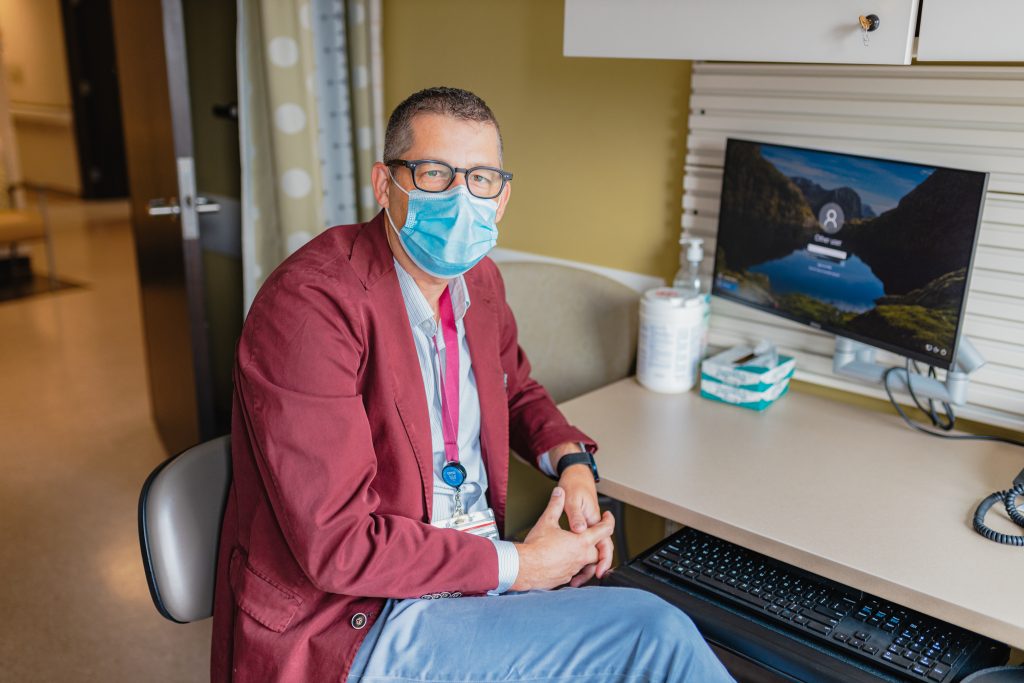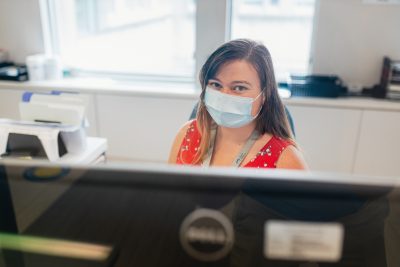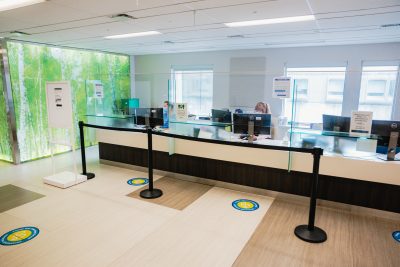For a 15-minute follow-up appointment with her specialist at the Boris Clinic at Hamilton Health Sciences (HHS), Shannon Clark used to allot herself between two and three hours. Time for travel, to find parking, to get from her car to the clinic, to wait in the waiting room, plus the actual appointment.
“Now, my 15 minute appointment takes 15 minutes,” she says.
Clark no longer needs to go into the hospital as she can have her appointments virtually – over the phone or through a secure computer video connection – thanks to a new, streamlined approach at the Boris Clinic.

Transition to virtual care
The Boris Clinic is one of HHS’ largest outpatient clinics with more than 125 physicians providing care across 20 specialties, including diabetes, immunology, respirology, and rheumatology. Many long-term patients visit anywhere from once a month to once a year. The Boris Clinic is an outpatient clinic run in partnership with McMaster University and funded by Hamilton’s Boris family. This innovative clinic allows adult patients with complex health problems to see several specialists with different medical specialties during one visit, under one roof.
“The entire clinic from the physical space to the processes in place were all designed for patients coming into the clinic,” says Marlene DaGraca, clinical manager. “Once we started doing virtual appointments due to the pandemic, our process could be confusing for patients.”
It became clear that a new approach was needed to make virtual appointments easier for patients and to allow for more virtual appointments to take place. Recognizing this, the Boris Clinic became one of four virtual care pilot projects across the organization who received support from the HHS Virtual Care Operations Team.
Benefiting the Patients
Since the clinic sees patients from all over Ontario, the option for virtual care has saved many people a significant amount of time and stress, especially for those not comfortable going out during the pandemic. Patients with complex health problems can still have multiple virtual appointments with multiple specialists on the same day.

Business clerk, Kyra Havlin helps patients at either the in-person desk or virtual desk.
“We can book back-to-back virtual appointments with different physicians the same way we would in-person, or even a combination of some in-person and some virtual appointments depending on what works best for the physician and patient,” says DaGraca.
Virtual appointments can either be by phone or a secured video call through the Ontario Telemedicine Network. Physicians can still refill prescriptions, order bloodwork and scans, and make referrals with the help of business clerks.
“There is still a fair bit of streamlining to be done to integrate virtual care into the hospital, but there’s no doubt the benefits it has for the patients,” says Dr. Michael Cyr, physician in clinical immunology and allergy at the Boris Clinic. “Shannon is a great example of this. Having already met her before the pandemic, I’ve gotten to know her well and a follow-up appointment by phone can be just as effective as in-person.”
Changes to the Boris Clinic
Previously, the business clerks responsible for check-ins and follow-up appointments were organized by specialties and only worked with that selection of physicians and patients. Now, with the help of the Virtual Care Operations Team, the desks are organized by in-person or virtual appointments and staff work with all physicians in all specialties.
The new in-person desk at the Boris Clinic.
“There’s a lot to learn with so many physicians having different preferences and requirements for their patients,” says Kyra Havlin, business clerk. “However, we’re a great team and work together to ensure patients are given information clearly and accurately.”
Even the physical space has changed. What was once the front desk is now the in-person desk specifically for check-ins and follow-ups. And the desk that used to be specifically for diabetes care is now for virtual care. This is where the clinic’s business clerks manage virtual appointments, schedule virtual follow-ups and ensure appointment reminder letters are sent to patients.
“There are hundreds of appointment letter options based on the specialty and requirements of the appointment,” says DaGraca. “These letters needed to be revised to identify whether the appointment was in-person or virtual. Now with streamlined appointment letters, it’s much clearer for our patients.”
As a patient advisor, Clark has been able to provide feedback on how to make these clinic changes, and even the wording in the letters, easier for patients.
Virtual care here to stay
While virtual appointments began shortly after the pandemic started, the Boris Clinic reorganization began in May 2021 to ensure care could continue during the third wave. This work will continue to evolve to meet the needs of patients.
“I see the need for both in-person and virtual appointments and I hope that we can maintain a hybrid model in the future,” says Dr. Cyr.

